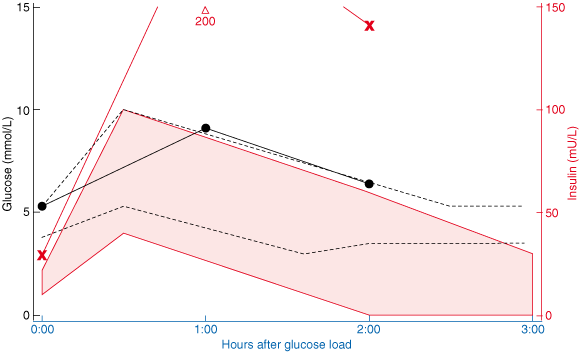To the Editor: The authors of the article on insulin resistance1 challenge users of serum insulin levels to demonstrate benefit in clinical practice.
I use the “worse still” measurement of insulin responses during an oral glucose tolerance test not to diagnose the metabolic syndrome, but as a method of motivating patients about the seriousness of the condition. A graph that shows the insulin response “off the page” makes a very effective propaganda tool (Box). An elevated fasting insulin level or, even better, very high insulin levels during an otherwise normal glucose tolerance test, is also very effective in indicating to parents of well children with obesity that diabetes is threatened. Otherwise, we are left with vague references to increased risk, which means little to the parents. One picture is worth a thousand words.
- Chris Strakosch1
- Department of Medicine, University of Queensland, Brisbane, QLD.
- 1. Samaras K, McElduff A, Twigg SM, et al. Insulin levels in insulin resistance: phantom of the metabolic opera? Med J Aust 2006; 185: 159-161. <MJA full text>





